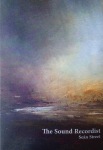
Karen Jones’s heartbreaking flash fiction collection, When It’s Called Not Making Love, is published by Ad Hoc Fiction which specializes in flash fiction authors and has published writers like Meg Pokrass, Diane Simons, and Jude Higgens. Jones’s collection takes a look at adolescent and young adult sexuality from the point of view of Bernadette, someone who is on the outside because she is considered overweight and just a little different. Jones is a master of point-of-view and draws us into Bernadette’s interior life allowing us to live in the awkward body of someone who wants and needs love but does not know exactly how to engage meaningfully with other people. It is an exceptional collection showing how people are at the same time used and rejected sexually and what that does to the psyche.
The most powerful flash piece for me was the final and titular story. In it, we are given three moments with three young men who have sex with Bernadette from behind, so they do not have to look her in the eye. They brag of the numbers of their sexual conquests, and she tells each they are her first in an attempt to elicit a stronger emotional reaction from them. The problem is in the way that these boys look at her and in how she sees herself as undeserving or incapable of having a fulfilling emotional experience involving sex. It ends with the line, “Maybe someday another boy would like her enough to look her in the eye while he fucked her. Maybe she’d even call it making love” (38). The difference between making love and getting fucked is the key concept of the story and collection. Bernadette does not seem to know how to achieve love, so she settles for what she can get. Of course, this is the key problem for many of us when we are young and are just trying love out. She captures that problem so well, and she had me musing about my own youthful fumblings toward emotion.
Her awkwardness in her own body is her defining characteristic in her world. Early in the collection, she begins a friendship with a girl named Jenny, whom everyone thinks is superior. Her grandmother tells the main character, “‘She’s half the size of you and twice as smart . . . And so pretty. Why can’t you have silky hair like hers? Why are you such a lump of a girl, Bernadette?’” (3). This is a social condition that we are all aware of, but Jones does an exceptional job of drawing out what it means to be a human being who is seen as an insufficient accessory. This expectation that she is Jenny’s accessory and a bad one at that drives her early sexual encounters where she is often offered sexually to a friend so that Jenny can get the boy or the experience she wants. She is abused and neglected. She is a person capable of exceptional emotional range and she is denied the chance to have those emotions.
When It’s Called Not Making Love captures so well the pain of young people who want a kind of physical perfection and think they will never have it. It also captures the trap of thinking of this world in terms of perfection and imperfection.
John Brantingham 29th March 2021


